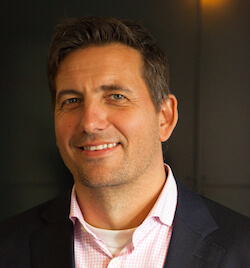Virtual Workshops are Here to Stay
By Peter Stoppelenburg
Now that most of us are working virtually, I wanted to provide some experiments and best practices for virtual, multi-day workshops with complex content and topics with many attendees.
Since the global shut down of travel due to COVID-19, I have been facilitating workshops that were scheduled to run face-to-face that have now been converted, out of necessity, into virtual ones. With clients ready to suspend their initial primary reactions like: ‘It can’t be done virtually,’ ‘we will not have the same outcome,’ ‘it will be an energy drain,’ and ‘how do we build personal connection?’, we’ve learned a lot in a very small space of time on how to have successful virtual meetings.
I’ve found leaders can enhance remote collaboration and co-create solutions virtually, and that can be an energizing, high-quality, digital working experience. If you run it well, you can create better outcomes in a shorter timeframe (that are often far more to the point) and at a lower cost (avoiding travel cost and time).
To have a successful virtual workshop, here are some best practices that have worked well for us in the past few weeks. Some of these things you also do in face-to-face meetings, but you need to be far more conscious about them in order to purposefully unlock them in a virtual setting.
It starts with technology. Every virtual workshop starts with selecting the appropriate tools to support collaboration. There are several tools available like Google Meet, Zoom, and others that I’ve found to work successfully. Make sure you test the tools 2-3 days in advance, to resolve any technical issues. Set up all the functionality that you need for the workshop (e.g. a Whiteboard in Zoom, a Jamboard in Google, virtual breakout rooms for breakout sessions). Communicate the selected tools to participants before the meeting. Depending on their level of capability, run a tutorial so everyone knows how to use the tools. On the day of the workshop, let everyone dial in separately, not together in a room (otherwise side-chatter will happen). Technology that is not set up well, or those who don’t know how to operate in a virtual environment, can be a major distraction.
Be well prepared. The devil is in the details. It is important to take time for good preparation, so spend time on a detailed design. Upfront, it is important to create a clear understanding with participants of what needs to be done during the virtual workshop. It is key to co-create the agenda and the design to have the buy-in and ownership of participants. Make sure to share pre-read materials with participants. In my experience, the preparation is 2 to 3 times longer (including the technology set-up) than for a face-to-face workshop.
It needs more structure. Virtual meetings need more structure and there is less space for improvisation. Set some ground rules at the beginning to ensure participants are fully present (simple things like ‘put your camera on’) which can be used to flag when energy levels are waning. Make sure to be strict in time boxing the different sessions (in general, use different formats). What works well is working in a plenary (not more than an hour) and having virtual breakout rooms (max 3 to 4 people per room). Individuals should have different devices (e.g. a computer for the mainstream in the plenary room, an iPad to work simultaneously in a breakout room and make a WhatsApp group or another messaging tool to have direct communication with the group).
It also helps to have longer breaks (at least half an hour) so that people can re-energize. One of the most dangerous things undermining a virtual workshop, especially in a plenary discussion, is when people go rabbit-holing. This will make the session drag. Individuals need to be succinct and to the point. This is actually one of the main advantages of why a virtual workshop can be even more efficient than a face-to-face meeting. To do so, it needs to be strictly facilitated – you can even appoint an observer who will stop rabbit-holing when it occurs.
Continually monitor the energy level. Remember that it’s easier to get distracted on a virtual call. It takes a different kind of energy and a lot of focus. It also takes a high-level of concentration to listen to everyone and, at times, refrain from speaking (which can be hard for some). The key here is to pay attention to the energy level – have long breaks, introduce ice breakers or energizers, and bring some playfulness and fun into it as well. More frequent verbal check-ins will be needed. Also, encourage everyone to give some verbal cues, as people can’t read your body language.
Remind everyone they can move and do not need to sit behind the screen all the time. In fact, you can do sessions outdoors or do something to detach them from the screen. Try to make everyone responsible for both their own, and the group’s, energy level. Last but not least, if things don’t work, change it. There is more structure to a virtual workshop, but that doesn’t mean you shouldn’t change it when it doesn’t work
Be creative and courageous. In my experience, you can use a lot of creative solutions and work formats, such as the use of images, physical exercises, virtual drinks, mindfulness, music, avatars, and gamification formats. So much is possible in the virtual world. Of course, the type of workshop will determine the format you choose.
Good teams are built on emotional connection and relationship. In the virtual world, you can strengthen relationships as long as you do not get distracted by technology. I often believe the biggest hurdle is the mindset.
I hear people say that after the pandemic subsides, everything will revert back to normal again and we will go back to the physical workshops. I believe this disruption will fundamentally change the way we run sessions like this. As people experience the power of virtual workshops and value the outcomes, they will become far more established. Regardless of the eventuality, the lessons learned throughout this uncertainty have been invaluable.

Peter combines a business career in senior leadership roles with extensive experience supporting organizations with their transformation, to build high performance and agile teams enhancing the effectiveness of their leaders. He has focused on large global companies seeking to foster cultures of co-operation, innovation, and operational agility. The ultimate objective to improve results.
Peter has vast international business experience with hands-on transformation and leadership capabilities with over two decades in senior finance and general management positions.
He is the author of the bestsellers: “High Performance 3.0, How To Learn Yourself, Your Team and Your Organization to Excel” (2011, SDU Publishers) and the “Essence of an Agile Organization” (2018 Boom Publishers). If you would like to get in touch with Peter check out his Linkedin profile.





